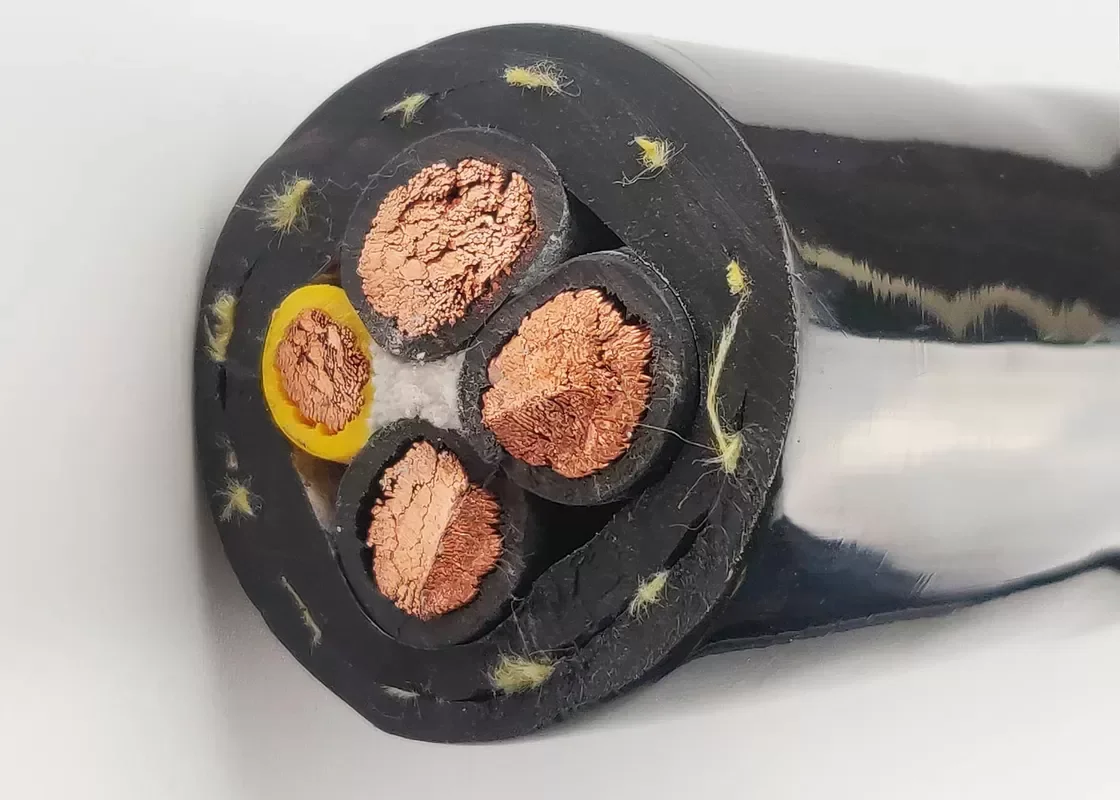Tinned copper wire refers to a copper wire with a thin layer of metallic tin plated on the surface of the copper wire. The tinned copper wire is relatively soft and has good electrical conductivity. Compared with bare copper wire, its corrosion resistance and oxidation resistance are stronger, which can greatly extend the service life of weak current cables.
The role of copper wire tinning
The main purpose of tinning copper wire is to prevent copper from being oxidized when exposed to air to form a film - patina (CU2(OH)2CO3). The patina, on the other hand, is poorly conductive and increases resistance. Tinned copper wire prevents redox reactions from occurring, resulting in patina. And can increase heat dissipation, can improve electrical conductivity, improve wire performance.
In addition, the tinned copper wire can also prevent the insulating rubber from sticking, the wire core becomes black and brittle, and improves its solderability. Tinned copper wire is mainly used for rubber-insulated mining cables, flexible wires, flexible cables and marine cables, etc. as conductive cores, as well as for outer shielding braids and brush wires of cables.
The production process of tinned copper wire
The production process of tinned copper wire consists of eight steps.
1. Lay out the line. Lay out the line is critical in production. The surface of the copper wire used for plating should be as smooth and round as possible to meet the requirements of national standards.
2. Annealing. The annealing temperature of the copper wire is a key factor affecting the elongation of the finished wire. The annealing temperature should not be too high (slightly lower than the normal annealing temperature) due to the secondary heating in the tin furnace.
3. Pickling. Before the copper wire enters the tin furnace, it must be cleaned with an appropriate pickling solution to ensure good adhesion between the tin layer and the copper wire.
4. Tin furnace. Tin furnace equipment and tin furnace temperature play a key role in the quality of the product.
5. Block tin mold. Many companies do not use it. It is recommended to install a tin blocking mold device in the wire take-up part of the tin plating machine.
6. Cooling method. For the tinned copper wire with a wire diameter of less than 0.2mm, air cooling should be used, and the distance between the traction and the tinned copper wire should be well controlled during production.
7. Adding guide shaft oil should be a relatively important process, and tinned copper wires are more or less produced with tin dust. In the process of producing twisted wires of electronic wires, such as 7/0.127, 7/0.16, 11/0.16, 11/0.127, 17/0.178, 41/0.16, 41/0.15, the twisting distance is strict. The tin ash in the tinned wire will cause the whole strand to be broken, and guide shaft oil should be added to prevent tin ash from being generated.
8. Take-up and traction speed. The take-up and traction speed should be determined according to the size of the wire, and annealing should also be considered. The pulling speed of the copper wire in the tin furnace is too fast, which will lead to insufficient annealing and affect the elongation rate, and also increase the probability of wire breakage. If the speed is too slow, the copper wire will spend too long in the annealing furnace and the wire will become stiff.

Tinned copper wire cables manufacturer
Shenghua Cable Co., Ltd. is an excellent cable manufacturer, selling all kinds of high-quality cables, such as tinned copper wire cables. The products are sold all over the world and are widely praised by domestic and foreign customers. If you want to know more about cables, or are interested in our products, you can visit the website of Shenghua Cable Co., Ltd. to contact us.